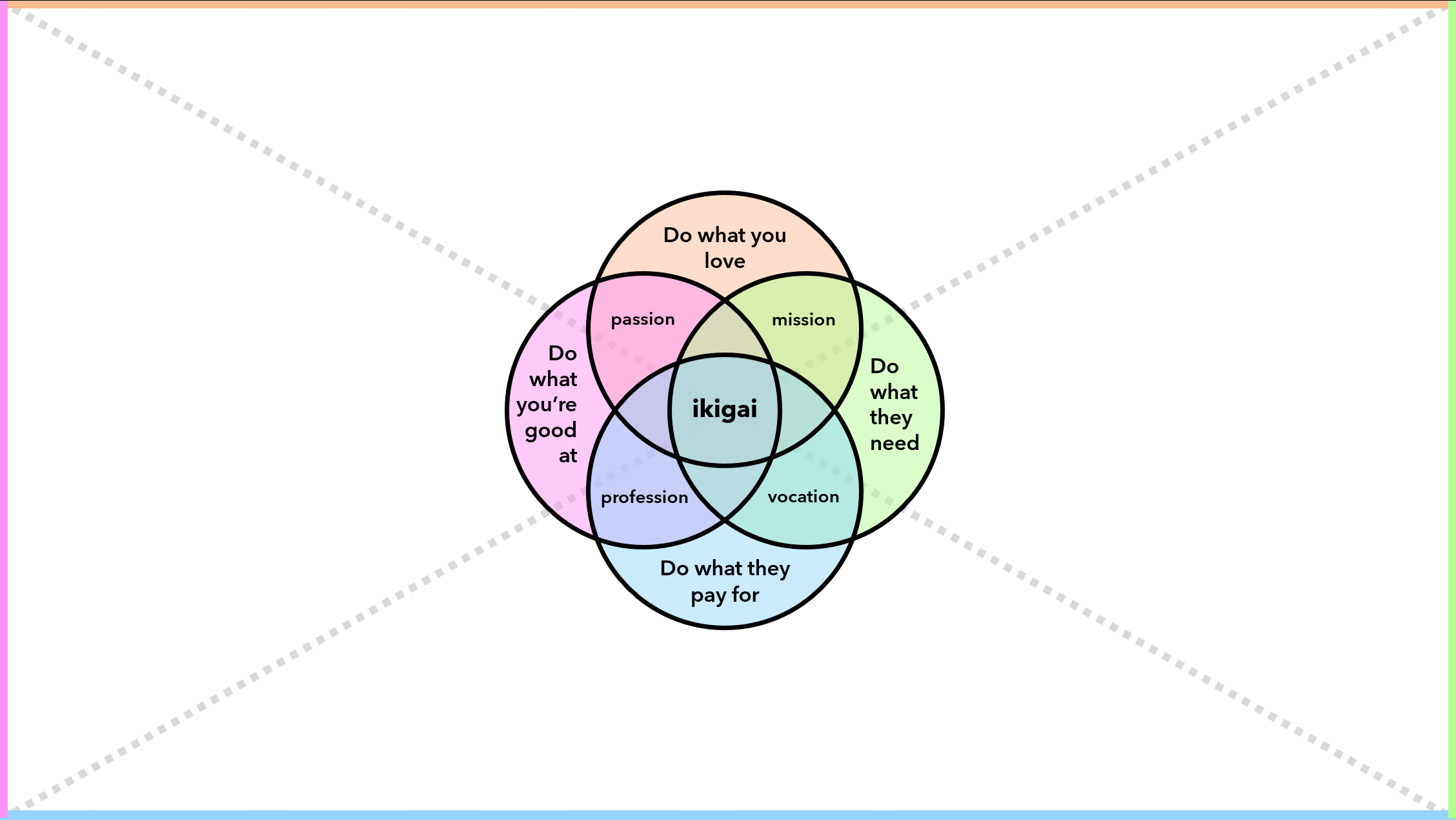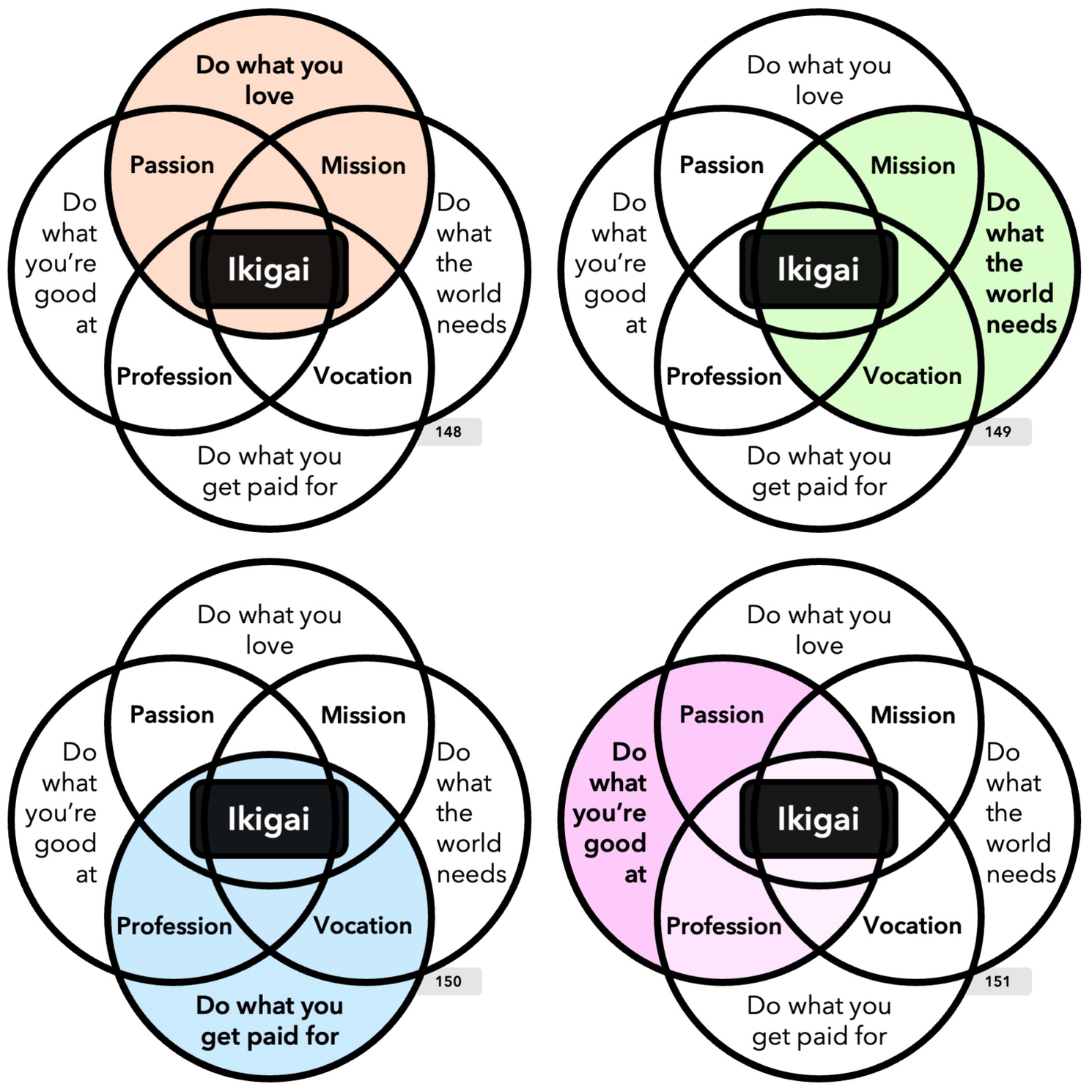Ikigai - Meaning and Purpose
Author: Jurgen Appelo
Half a year ago, our team spent a few meetings discussing our sense of purpose. Though each of us had our own slightly different reasons for joining the company, we agreed on the following statement that captured the consensus well enough at the time:
"We help the world do better work and foster joy for all involved."
It's not perfect, and it doesn't fully cover each team member's personal purposes. But it's good enough for now, and I like the rhythm of the statement, which makes it easier for me to remember. 😁
Defining a purpose can be helpful at any organizational level. As a starting point for discussions, I suggest using the Ikigai model.
The Ikigai model has gained popularity as a tool for individuals and organizations to define their purpose. I know; this is probably the 10,000th blog post on the topic. Sorry for that. The model is based on a Japanese concept that translates to "a reason for being." It is a Venn diagram that consists of four overlapping perspectives representing what you love doing, what you are good at, what the world needs, and what you can be paid for. The center of the diagram is your Ikigai, or your purpose in life.
One of the benefits of using the Ikigai model to define your purpose is that it provides a straightforward approach to the self-discovery (or self-definition) of the meaning of life. The model encourages individuals to reflect. By doing so, they can identify unique passions, strengths, needs, and opportunities, which can help them make more informed decisions about their career and personal life. For example, someone who loves to write, is good at research, and wants to impact the world positively could use the Ikigai model to identify a career as a journalist or non-fiction writer. (They may not want to put too much emphasis on getting paid much.)
Another benefit of using the Ikigai model is that it can help team members find happiness in their work lives. People with a clear sense of purpose are usually more motivated, engaged, and productive. Who wouldn't want that for themselves and their teams? I find working with a couple of purpose-driven teammates much more enjoyable than with a group of uninterested nine-to-fivers.
One potential drawback of the Ikigai model is that people often use the tool with an exclusive focus on the individual. While it is essential for team members to have a sense of purpose in their personal lives, we should remember the interrelatedness with the world around them. The Ikigai model suggests that the world's needs should be considered, but this can be interpreted in a narrow way that is only focused on the person. It may not encourage individuals to think about how they relate to their team and their organization in a more meaningful way. It's too easy to be a superhero while burning down the house.
For the unFIX Model, we converted the four perspectives of Ikigai to four distinct patterns and cards. To compensate for the bias towards the individual, we strongly recommend using the same patterns at the organizational level, Base-level, and Crew / Forum-level. You can initiate a healthy discussion around purpose alignment by evaluating upward and downward relationships.
For example, when you have a defined purpose for a Base, does each Crew simply adopt that exact purpose definition, or will they craft a specific purpose for themselves? And when they do, does it align well with each team member's goals in life? There are no generic answers to such questions, as all teams should travel their journeys.
The four perspectives and patterns of the Ikigai model can be helpful for individuals, teams, and organizations to define their reasons for being. The tool helps people identify passions, strengths, needs, and opportunities, which can lead to greater fulfillment and happiness. While it is essential to define purpose at multiple organizational levels to ensure they relate to each other meaningfully, this is a highly contextual decision.
And please don't think the result should always be a statement with rhythm. Your purpose can be a word, a story, a drawing, or a photo, whatever works for you.
p.s. I’d be the first to admit that creating happiness for everyone is not one of my greatest personal talents. But I do recognize the importance of it. Important enough to write a book on it, include it in a company name, and include it as part of a company purpose.


